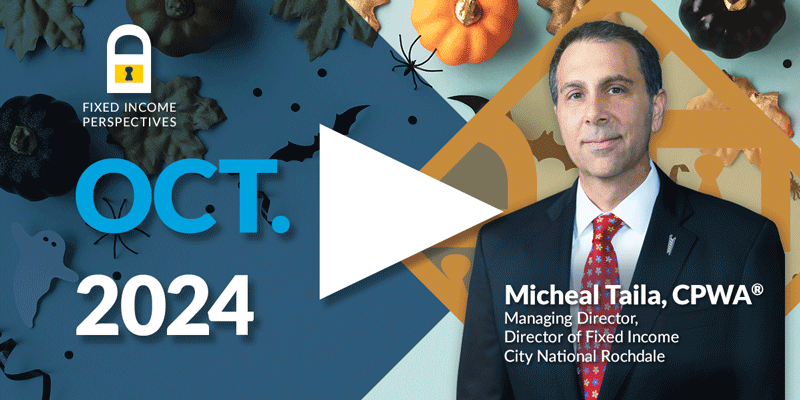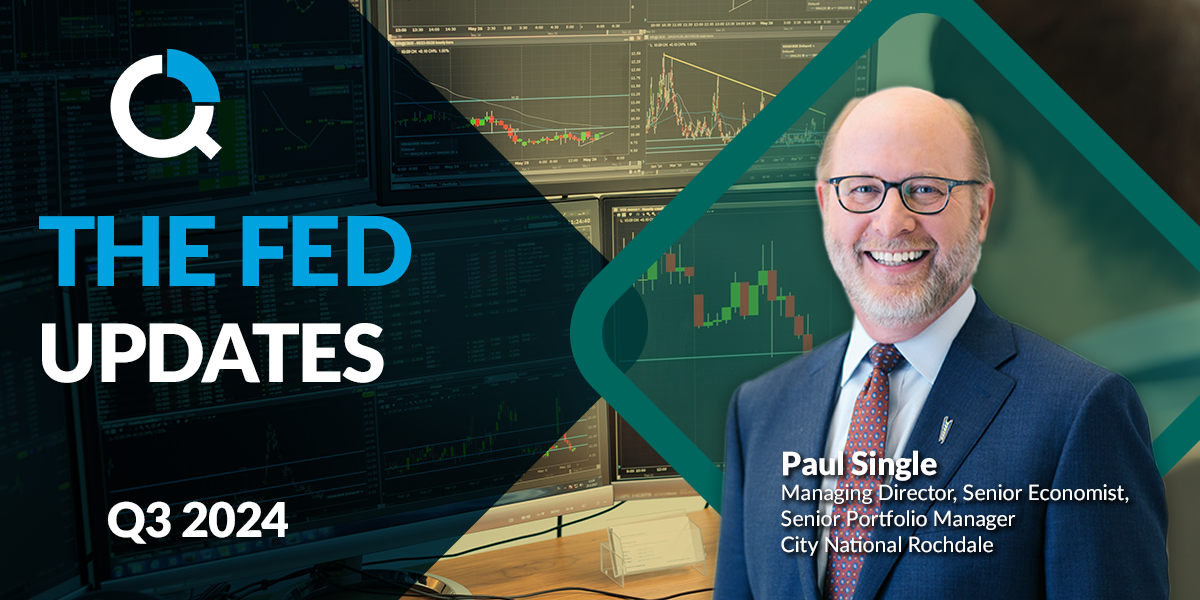

FAQs on the Markets and Economy
What do you think the Fed is planning for its next meeting on June 15?
Based on comments from various senior Fed officials’ speeches, the Fed is expected to hike the federal fund rate by 50 basis points to 1.375%. This will be the third hike in this cycle.
In March, the Fed’s projection of the 2022 year-end federal funds rate was 1.90%. Again, based on comments from speeches, the Fed’s expected updated projection to be released at the meeting is expected to show the federal funds rate at year-end will be around 2.5%. This rate will be close to the Fed’s neutral rate of 2.375%. The neutral rate is a model-driven rate that is believed to not add stimulus to the economy nor restrain it. Some people refer to it as the Goldilocks rate; not too soft, not too tight.
The following meeting will be at the end of July. At that meeting, the Fed is expected to hike the federal funds rate by an additional 50 bps.

Is the Fed’s raising of interest rates starting to slow the economy?
For measuring economic growth, the GDP report is the best measurement, but it is quarterly data that comes out a month after quarter-end.
A more contemporary view of the economy is the monthly labor report. In the May labor report, nonfarm payrolls grew just 390,000, the slowest pace since last April and down from the average of the previous three months of 516,000. This report is probably an early sign that the economy is slowing. It could be slowing from the Fed’s action to remove stimulus or just a natural slowdown from the unsustainable breakneck pace — it is too early to tell. However, it is not slowing fast enough to extinguish inflation. So this report does little to change our outlook on inflation or the Fed. The Fed still has a lot of rate hikes ahead of it just to bring the funds rate to just the neutral level (around 2.375%).
Another sign of the possible slowing of economic growth is average hourly earnings. The yearly change has now fallen in the past two months, which now stands at 5.2%. That is down from the cycle high in April of 5.6% (see chart).

What is causing recent municipal bond outperformance?
Sentiment in the municipal bond market quickly reversed course last month as the attractiveness of the asset class lured back buyers, leading to relative solid outperformance.
Per Bloomberg Barclays Indices, broad investment grade and high yield municipals recovered approximately 170 basis points (bps) and 115 bps since May versus continued weakness in U.S. Treasury securities over the same period. The snap-back in municipal bonds reflects several themes that should persist over the near term, helping support bond prices and valuations.
With Treasuries seemingly trading in a narrower range over the past few weeks, municipal bond fund flows began the month of June in positive territory, thus ending 15 weeks of consecutive redemptions.
The average municipal/Treasury yield ratio (higher percentage signals better buying opportunities in municipals) for 10-year benchmark bonds of 90% far exceeds the below-70% ratios that had persisted for much of last year. This key valuation metric briefly pierced 100% by mid-May 2022 (i.e., 10-year tax-exempt yields were above the comparable Treasury). Accordingly, the “cheapness” of municipal bonds has pulled traditional and nontraditional investors off the sidelines as the ability to capture attractive acquisition yields and value compared to other fixed income asset classes catalyzed demand in the market, helping to restore confidence.
The municipal market historically experiences a quick turnaround in market demand. For example, through the first four months of the year, nominal yields across the municipal yield curve rose between 150 bps and 200 bps. Over the past three weeks, municipal yields have roughly compressed between 40 bps and 55 bps as compelling opportunities surfaced. The summer is typically a seasonally supportive period for municipal bonds. The supply and demand imbalance tends to result in technical strength for the asset class, leading to a favorable outlook over the near term amid signs of improving market liquidity. Municipal bonds still present good value to investors across all market segments — investment grade, high yield and liquidity management. Notwithstanding likely episodic volatility in financial markets, the municipal asset class benefits investors seeking attractive tax-adjusted income and quality attributes.

Is the outlook for Emerging Markets (EM) Asia equities still positive?
While EM Asia equities continue to grade out well in our proprietary 4Ps framework, we are on watch given heightened uncertainty around the near-term outlook.
With higher commodity prices and weaker global demand set to weigh on economic recoveries and corporate earnings, growth across much of Emerging Asia will likely be slower this year than we had previously anticipated.
China in particular continues to experience setbacks to economic normalization and a recovery in its export sector as it grapples with getting COVID-19 under control. We believe China will eventually find steadier footing as restrictions on activity ease and the government shifts back to a pro-growth agenda. At the same time, there has been a notable shift across the rest of the region in an embrace of rate hikes and more constricting policy support. More broadly, we think the region’s near-term outlook has a greater vulnerability to tightening global financial conditions, including commodity and currency volatility.
The pattern of recent earnings revisions confirms our concerns. Though long-term fundamentals remain favorable and, we expect, in time will provide broader support for emerging Asia investors, we remain cautious on the asset class for now.

Important Disclosures
The information presented does not involve the rendering of personalized investment, financial, legal or tax advice. This presentation is not an offer to buy or sell, or a solicitation of any offer to buy or sell, any of the securities mentioned herein.
Certain statements contained herein may constitute projections, forecasts and other forward-looking statements, which do not reflect actual results and are based primarily upon a hypothetical set of assumptions applied to certain historical financial infor-mation. Certain information has been provided by third-party sources, and although believed to be reliable, it has not been inde-pendently verified, and its accuracy or completeness cannot be guaranteed.
Any opinions, projections, forecasts and forward-looking statements presented herein are valid as of the date of this document and are subject to change.
There are inherent risks with equity investing. These include, but are not limited to, stock market, manager or investment style risks. Stock markets tend to move in cycles, with periods of rising prices and periods of falling prices.
Investing in international markets carries risks such as currency fluctuation, regulatory risks and economic and political instability.
There are inherent risks with fixed income investing. These may include, but are not limited to, interest rate, call, credit, market, inflation, government policy, liquidity or junk bond risks. When interest rates rise, bond prices fall. This risk is heightened with in-vestments in longer-duration fixed income securities and during periods when prevailing interest rates are low or negative.
Investing involves risk, including the loss of principal.
As with any investment strategy, there is no guarantee that investment objectives will be met, and investors may lose money.
Past performance is no guarantee of future performance.
This material is available to advisory and sub-advised clients, as well as financial professionals working with City National Rochdale, a registered investment advisor and a wholly-owned subsidiary of City National Bank. City National Bank provides investment management services through its sub-advisory relationship with City National Rochdale.
Non Deposit Investment Products are: Not FDIC Insured, Not Bank Guaranteed, May Lose Value
The information presented does not involve the rendering of personalized investment, financial, legal, or tax advice. This presentation is not an offer to buy or sell, or a solicitation of any offer to buy or sell any of the securities mentioned herein.
Certain statements contained herein may constitute projections, forecasts and other forward-looking statements, which do not reflect actual results and are based primarily upon a hypothetical set of assumptions applied to certain historical financial information. Readers are cautioned that such forward-looking statements are not a guarantee of future results, involve risks and uncertainties, and actual results may differ materially from those statement. Certain information has been provided by third-party sources and, although believed to be reliable, it has not been independently verified and its accuracy or completeness cannot be guaranteed.
Past performance or performance based upon assumptions is no guarantee of future results.
Indices are unmanaged and one cannot invest directly in an index. Index returns do not reflect a deduction for fees or expenses.
Any opinions, projections, forecasts, and forward-looking statements presented herein are valid as on the date of this document and are subject to change.
All investing is subject to risk, including the possible loss of the money you invest. As with any investment strategy, there is no guarantee that investment objectives will be met and investors may lose money. Diversification does not ensure a profit or protect against a loss in a declining market. Past performance is no guarantee of future performance.
This material is available to advisory and sub-advised clients, as well as financial professionals working with City National Rochdale, a registered investment adviser and a wholly-owned subsidiary of City National Bank. City National Bank provides investment management services through its sub-advisory relationship with City National Rochdale.
INDEX DEFINITIONS
S&P 500 Index: The S&P 500 Index, or Standard & Poor’s 500 Index, is a market-capitalization-weighted index of 500 leading pub-licly traded companies in the U.S. It is not an exact list of the top 500 U.S. companies by market cap because there are other criteria that the index includes.
Muni Bond: A municipal bond is a debt security issued by a state, municipality or county to finance its capital expenditures, includ-ing the construction of highways, bridges or schools. These bonds can be thought of as loans that investors make to local govern-ments.
Bloomberg Barclays U.S. Corporate High Yield Bond Index: measures the USD denominated, high-yield, fixed-rate corporate bond market.
Dow Jones Select Dividend Index: The Dow Jones U.S. Select Dividend Index looks to target 100 dividend-paying stocks screened for factors that include the dividend growth rate, the dividend payout ratio and the trading volume. The components are then weighted by the dividend yield.
The SIFMA Municipal Swap Index: The Securities Industry and Financial Markets Association Municipal Swap Index is a 7-day high-grade market index comprised of tax-exempt Variable Rate Demand Obli-gations (VRDOs) with certain characteristics. The Index is calculated and published by Bloomberg. The Index is overseen by SIFMA’s Municipal Swap Index Committee.
CalPERS: The California Public Employees’ Retirement System, also known as CalPERS, is an organization that provides numerous benefits to its 2 million members, of which 38% are school members, 31% public agency members, and 31% state members.
4Ps: The 4P analysis is a proprietary framework for global equity allocation. Country rankings are derived from a subjective metrics system that combines the economic data for such countries with other factors including fiscal policies, demographics, innovative growth and corporate growth. These rankings are subjective and may be derived from data that contain inherent limitations.
Stay Informed.
Get our Insights delivered straight to your inbox.
Put our insights to work for you.
If you have a client with more than $1 million in investable assets and want to find out about the benefits of our intelligently personalized portfolio management, speak with an investment consultant near you today.
If you’re a high-net-worth client who's interested in adding an experienced investment manager to your financial team, learn more about working with us here


